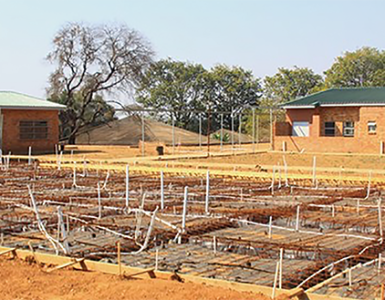FUTURE: The employer body to shift focus towards education and skills development that combines formal learning with job training…
By WSAM Reporter
The Steel and Engineering Industries Federation of Southern Africa (SEIFSA) has committed to addressing the country’s skills gap through its investment in training and development.
SEIFSA CEO Lucio Trentini says the organisation, representing 16 employer bodies in the metal and engineering industries, has made a strategic decision to invest in the SEIFSA Training Centre (STC) as its commitment to making a difference in South Africa. The associations have a combined membership of over 1 300 companies employing over 140 000 employees nationwide.
SEIFSA’s decision is in response to President Cyril Ramaphosa’s call to the private sector to equip South Africans with future-proof skills.
In his State of the Nation Address in February 2025, the President stressed “that to ensure that the economy has the skills it needs, we are increasing the production of artisans through TVET colleges. This is part of the shift we are undertaking towards education and skills development that combines formal learning with job training.”
“Drawing on the models that have proved successful in other countries, we call on the private sector to offer young people experiential learning opportunities while they undertake their studies,” the President added.
The umbrella body’s training centre offers accredited occupational apprenticeship programmes, specialised short courses in the engineering field, safety training, production technology training, and other non-accredited and accredited courses. It also offers training in nine trades: namely welder, boilermaker, mechanical fitter, fitter and turner, turner machinist, millwright, pipe fitter, electrical and instrumentation.
The centre is in the process of upgrading its legacy toolmaker accreditation to an occupational qualification for modern toolmakers. This trade is aligned with Level-5 of the National Qualifications Framework (NQF level 5), increasing the number of trades offered to 10.
The switch from legacy to occupational training as per the Quality Council for Trades and Occupations (QCTO) is a point of focus for the centre in its commitment to providing industry-aligned training and qualifications.
The centre’s director Emile Jacobs says the new equipment the centre has invested in for the modern toolmakers accreditation will help to make artisans more employable and reduce the need to import workers from other countries.
“There will be improved productivity because the toolmakers will be able to use modern equipment. Upskilling artisans, such as training the modern toolmaker with new skills, is good for industry,” he says.
Learning a trade not only improves an individual’s employment opportunities but can also be the basis of starting a small and in time a medium-sized enterprise. The training centre also runs an incubation hub pilot project, teaching artisans business skills, including marketing, business plan development and costing. The artisans who complete the incubation process are equipped with skills to create work for themselves and in time others.
Zizile Lushaba-Nyawo, SEIFSA Human Capital and Skills Development Executive, says: “SEIFSA is committed to supporting Government efforts to increase the number of skilled people in the industry, and, in turn, the country. We are creating a pipeline and pool of skilled individuals.
“Moreover, we are proud to mention that the centre is equipped to accommodate and train people with disabilities.
This positions the SEIFSA Training Centre as a valuable contributor in giving disabled persons a chance at a meaningful career, while at the same time the STC is a strategic partner for companies striving to meet compliance targets that prescribe the involvement of people with disabilities in the workplace,” says Lushaba-Nyawo.
Through its investment in the facility, SEIFSA is committed to upskilling South Africans, no matter their race, gender or ability in order to not only improve their chances of finding work, but – more importantly – to become entrepreneurs and business owners themselves.
The federation was formed in 1943 and its member companies range from giant steel-making corporations to micro-enterprises employing fewer than 50 people.






























